ISO / ASTM Technical textil standard
ISO and ASTM standards for the manufacture of personal protective equipment (PPE)
For the production of Personal Protective Equipment (PPE) it is mandatory that the technical textile complies with the relevant standard, ISO and/or ASTM. Use the options to search and filter through the available standards.
EN ISO 11611
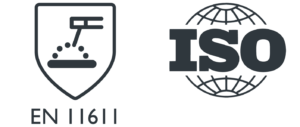
The EN ISO 11611 standard specifies minimum safety requirements and their test methods for protective clothing and the processes related to comparable risks.
EN ISO 11612
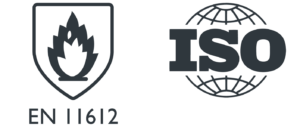
The EN ISO 11612 standard analyses protective properties of garments, their materials (protective fabrics) and accessories when presented with heat and flames. In addition, this standard analyses whether resistance, shrinkage and useful life meet minimum levels. All this is certified in official ILAC-MRA laboratories.
EN ISO 1149
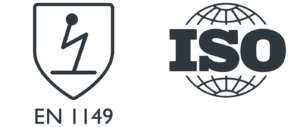
The EN ISO 1149 standard specifies a test method for the materials used for manufacture of protective clothing or gloves with electrostatic dissipation to prevent incendiary discharges.
EN ISO 13688

The EN ISO 13688 standard specifies the general performance requirements for ergonomics, innocuousness, size designation, ageing, compatibility, marking and information that must be provided to the manufacturer for protective clothing.
The EN ISO 13688 standard should only be used in combination with other standards that contain specific protection requirements and not autonomously.
EN ISO 13034
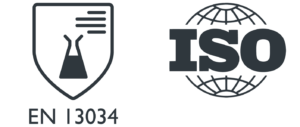
The EN ISO 13034 standard specifies the requirements for protective clothing against splashes of chemical products. Feature requirements regarding abrasion, resistance and traction and penetration as well as repellancy of acid liquids are checked.
Garments classified under this standard are considered to be in Category III.
EN ISO 20471
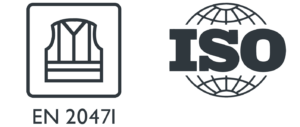
The EN ISO 20471 standard specifies high-visibility requirements for protective clothing that is capable of visually signalling the presence of the wearer. High-visibility clothing is made to make the wearer visible under any kind of light, to be seen by drivers of vehicles or other mechanised equipment in daylight and when illuminated by lamps in darkness.
Requirements for colour and retro-reflection features are checked, as well as those related to minimum area and availability of the materials used in the protective clothing.
IEC 61482-2
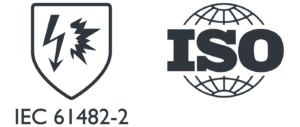
The IEC 61482-2 standard specifies protection levels that garments and fabrics must meet when presented with electric arc. Protection levels may be used in conformance with the following standards: Open Arc IEC 61482-1-1 that records arc rating levels (ATPV or EBT) and Box Test EN IEC 61482-1-2 in Class 1 (4Ka) and/or Class 2 (7Ka).
EN ISO 15384
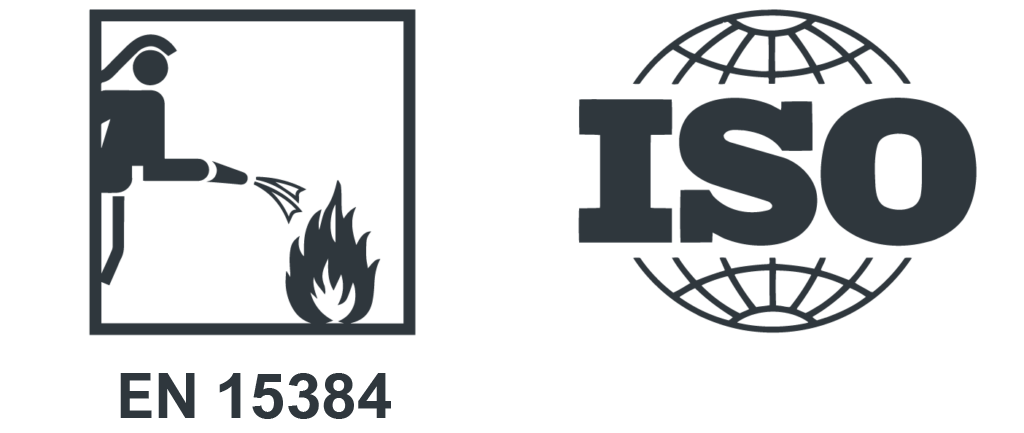
The EN ISO 15384 standard specifies the test methods and minimum features for protective clothing designed to protect the body of the wearer, except for the head, hands and feet, when worn for forest firefighting and associated activities.
EN ISO 469
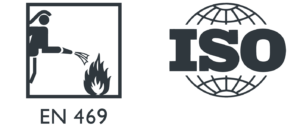
The EN ISO 469 standard specifies the minimum required levels for protective clothing that is used during firefighting procedures and associated activities.
EN ISO 343
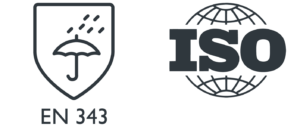
The EN ISO 343 standard specifies the requirements and test methods applicable to protective clothing for precipitation.
EN ISO 342
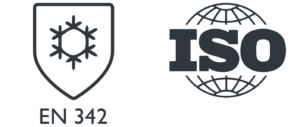
The EN ISO 342 standard indicates the minimum security requirements established for choosing protective clothing against cold environment.
EN ISO 14058
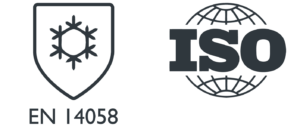
The EN ISO 14058 standard specifies the requirements and test methods for the features of garments for protection of the body against cold environments with temperatures above -5ºC.
EN ISO 14116
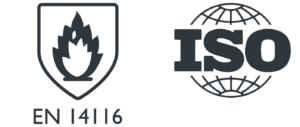
The EN ISO 14116 standard specifies a test method for the materials allotted for use in the manufacture of protective clothing or gloves with electrostatic dissipation to prevent incendiary discharges.
NFPA 2112
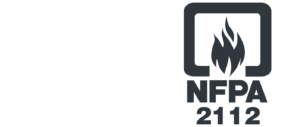
The NFPA 2112 standard specifies the American requirements and methods of analysis for fireproof garments and fabrics for factory worker in the presence of fire exposure.
NFPA 1971
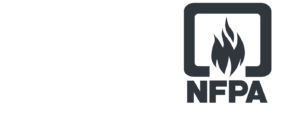
The NFPA 1971 standard specifies some characteristics for firefighting suits, establishes minimum protection levels against thermal, physical, environmental and bloodborne pathogen risks that come about during firefighting work.
NFPA 1977

The NFPA 1977 standard specifies the requirements for protective garments and equipment to protect against environmental effects faced by personnel that carry out firefighting operations.
NFPA 70E

The NFPA 70E standard specifies the requirements for protective garments and equipment against electric arc and related thermal risks.
ASTM F1959/F

The ASTM F1959/F standard specifies the protection levels that must be met by garments and fabrics when presented with electric arc according to American standards.
ASTM D6413

The D6413 standard determines the response of fabrics when presented with vertical flame.
EN ISO 6530

The EN ISO 6530 test method specifies material resistance to penetration by liquid chemicals.
EN ISO 12127

The EN ISO 12127 test method determines the transfer of heat by contact through protective clothing or its component materials.
EN ISO 13934

The EN ISO 13934 test method determines the maximum force and prolongation of maximum force for fabrics.
EN ISO 13937

The EN ISO 13937 method determines tear forces.
EN ISO 13938

The EN ISO 13938 determines bursting strength and bursting distension of protective fabrics.
EN ISO 15025

The 15025 test method determines flame propagation limits.
EN ISO 17493

The 17493 test method determines resistance to convective head using a convection oven.
EN ISO 5077

The EN ISO 5077 test method specifies preparation, marking and measurement of fabrics in order to determine variations in dimensions.
EN ISO 6942

The 6942 test method evaluates materials when they are exposed to a radiant heat source.
EN ISO 9150

The 9150 test method determines the behaviour of materials upon contact with small splashes of molten metal.
EN ISO 9151

The 9151 test method determines convective heat transfer upon exposure to a flame.
EN ISO 9185

The 9185 test method evaluates the resistance of protective clothing materials to molten metal splashes.
If you have any doubt about what is the technical textile standard for your protective clothing, please contact with Marina Textil technical department.




